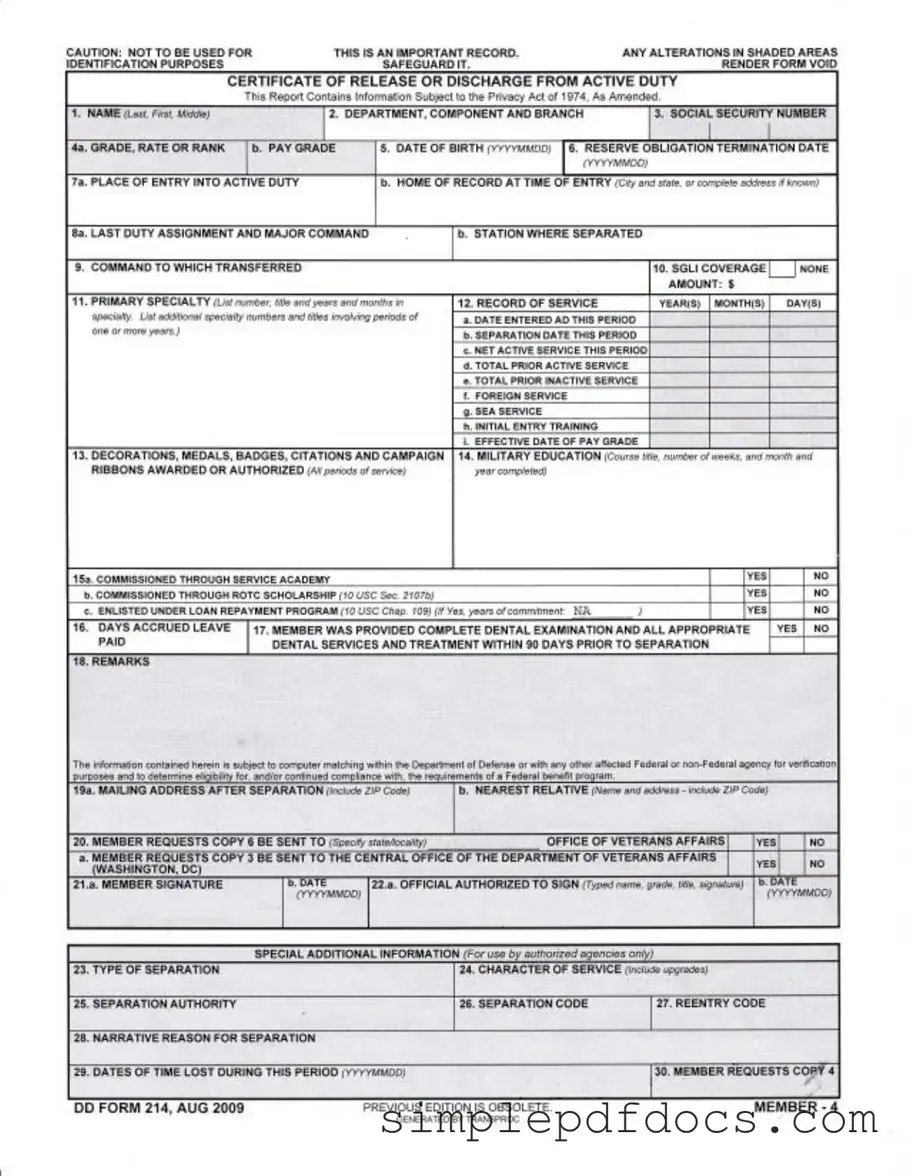Fill Your Dd 214 Form
The DD Form 214, also known as the Certificate of Release or Discharge from Active Duty, is a crucial document for military personnel. This form provides essential information about a service member’s time in the military, including their rank, service dates, and character of service. It is important to keep this record secure, as it is not intended for identification purposes and any alterations can render it void.
Get Document Here
